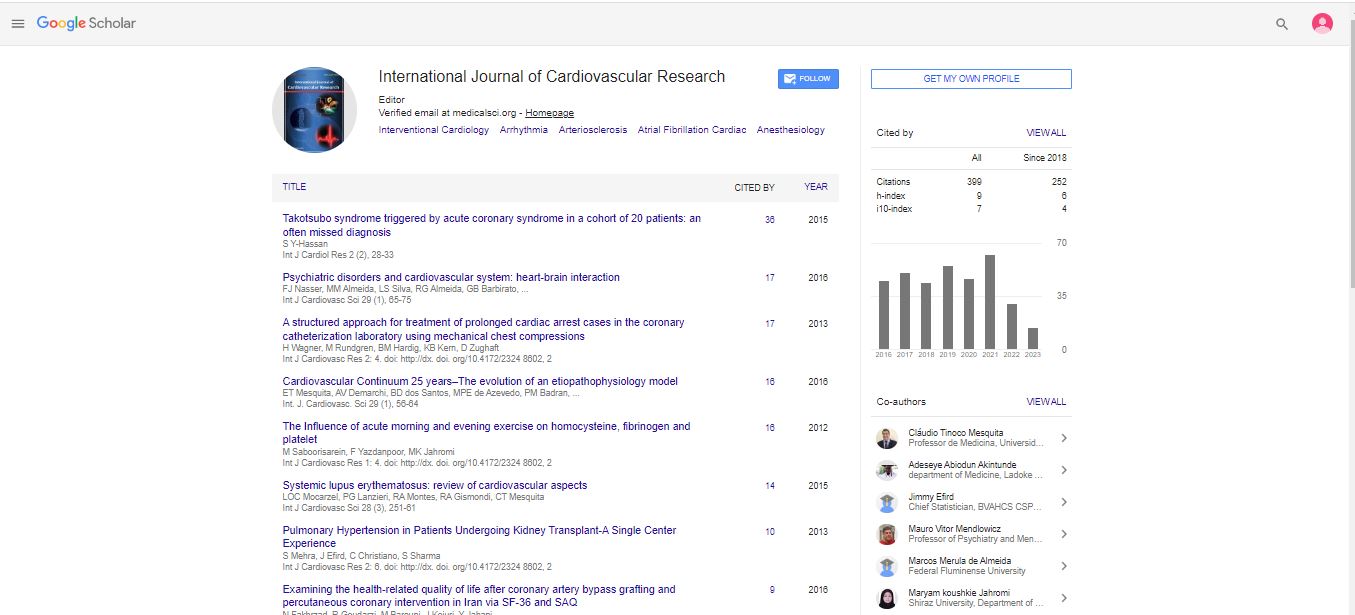Research Article, Int J Cardiovasc Res Vol: 4 Issue: 1
Comparison of Electrocardiographic Findings and Holter Recordings in Patients with Behcets Disease and Healthy Volunteers
| Tolga Aksu1*, Tumer Erdem Guler1, Veli Kaya2, Nurcan Arat3 and Omac Tufekcioglu4 |
| 1Kocaeli Derince Education and Research Hospital, Department of Cardiology Kocaeli, Turkey |
| 2Mersin State Hospital, Department of Cardiology, Mersin, Turkey |
| 3Florance Nighthingale University Hospital, Department of Cardiology, Istanbul, Turkey |
| 4Turkiye Yuksek Ihtisas Hospital, Department of Cardiology, Ankara, Turkey |
| Corresponding author : Tolga Aksu, MD Kocaeli Derince Education and Research Hospital, Department of Cardiology, Kocaeli, Turkey Tel: +00905319903278 E-mail: aksutolga@gmail.com |
| Received: January 18, 2015 Accepted: January 25, 2015 Published: January 27, 2015 |
| Citation: Aksu T, Guler ET, Kaya V, Arat N, Tufekcioglu O, et al. (2015) Comparison of Electrocardiographic Findings and Holter Recordings in Patients with Behcet’s Disease and Healthy Volunteers. Int J Cardiovasc Res 4:1. doi:10.4172/2324-8602.1000196 |
Abstract
Comparison of Electrocardiographic Findings and Holter Recordings in Patients with Behcet’s Disease and Healthy Volunteers
Objective: Behcet’s disease (BD) is known as a chronic relapsing, inflammatory process manifesting with multi systemic involvement. The aim of this study was to compare resting electrocardiography (ECG), exercise ambulatory ECG and Holter recording findings and autonomic nervous system (ANS) function in patients with BD versus healthy volunteers. Methods: The present study involved 90 subjects including 54 patients with BD (42 female, 12 male, mean age 29.8 ± 8.1 years) and 36 healthy volunteers (24 female, 12 male, mean age 28.1 ± 4.7) as a control group. All patients and controls had 12 lead ECG recorded at rest and exercise stress test. Digital ECG files were retrieved and analyzed with use of a software system. The corrected QT interval (QTc) was calculated by Bazzet’s formula. To test autonomic nervous system function, heart rate variability (HRV) studies were performed Results: Basal clinical, hematologic and biochemical characteristics were similar between groups. PR interval was longer in patients than in controls (161 ± 10, 145 ± 11, respectively, p=0.0005) however atrioventricular block was not detected in any group. Basal heart rate, QRS duration and QTc were similar between groups. All exercise ECG parameters were similar between groups. SDNN was less in patients than in controls; however SDANN was similar in both groups. There was a decrease in RMSSD and PNN50 and this finding was compatible with decreased HRV. Conclusions: Our data suggest that patients with BD may have asymptomatic ANS dysfunction, which is in the form of increased sympathetic and decreased parasympathetic modulation, and power spectral analysis of HRV is beneficial in assessing the ANS function. Also, we concluded that rest and exercise ECG cannot be used to evaluate cardiac involvement in BD.




